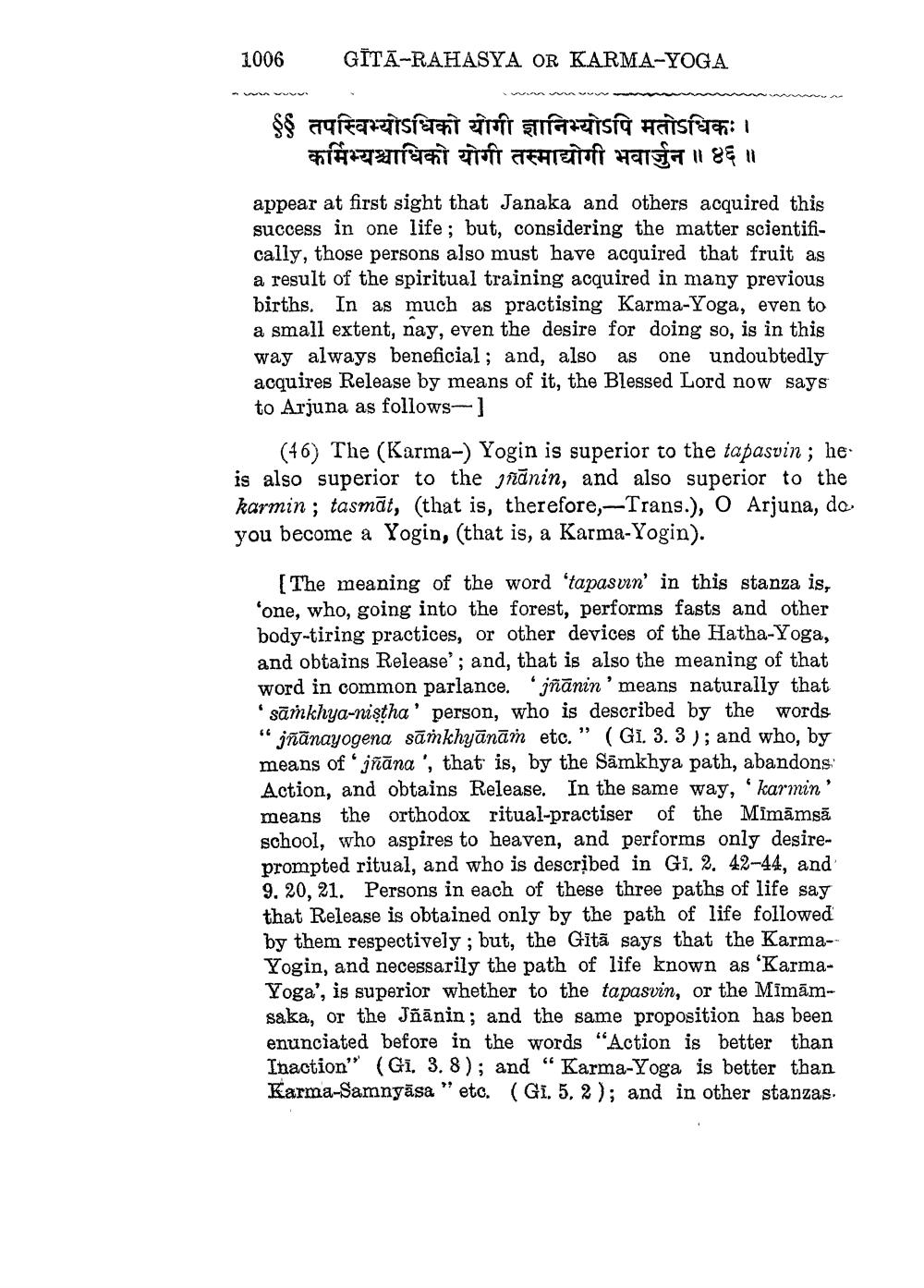________________
1006
GÍTA-RAHASYA OR KARMA-YOGA
६ तपस्विभ्योऽधिको योगी ज्ञानिभ्योऽपि मतोऽधिकः।
कर्मिभ्यश्चाधिको योगी तस्माद्योगी भवार्जुन ॥४६॥
appear at first sight that Janaka and others acquired this success in one life; but, considering the matter scientifically, those persons also must have acquired that fruit as a result of the spiritual training acquired in many previous births. In as much as practising Karma-Yoga, even to a small extent, nay, even the desire for doing so, is in this way always beneficial; and, also as one undoubtedly acquires Release by means of it, the Blessed Lord now says to Arjuna as follows]
(46) The (Karma-) Yogin is superior to the tapasvin; he is also superior to the jñānin, and also superior to the karmin; tasmāt, (that is, therefore,-Trans.), O Arjuna, de, you become a Yogin, (that is, a Karma-Yogin).
[The meaning of the word 'tapasvin' in this stanza is, ‘one, who, going into the forest, performs fasts and other body-tiring practices, or other devices of the Hatha-Yoga, and obtains Release'; and, that is also the meaning of that word in common parlance. 'jñānin' means naturally that
sāmkhya-nistha' person, who is described by the words " jñānayogena sākhyānāṁ etc.” (Gi. 3.3); and who, by means of 'jñāna ', that is, by the Sāmkhya path, abandons, Action, and obtains Release. In the same way, 'karmin' means the orthodox ritual-practiser of the Mimāmsā school, who aspires to heaven, and performs only desireprompted ritual, and who is described in Gi. 2. 42-44, and 9. 20, 21. Persons in each of these three paths of life say that Release is obtained only by the path of life followed by them respectively; but, the Gitã says that the KarmaYogin, and necessarily the path of life known as 'KarmaYoga', is superior whether to the tapasvin, or the Mímāmsaka, or the Jñānin; and the same proposition has been enunciated before in the words "Action is better than Inaction" (Gi. 3. 8); and “Karma-Yoga is better than Karma-Samnyāsa" etc. (Gi, 5, 2); and in other stanzas.




